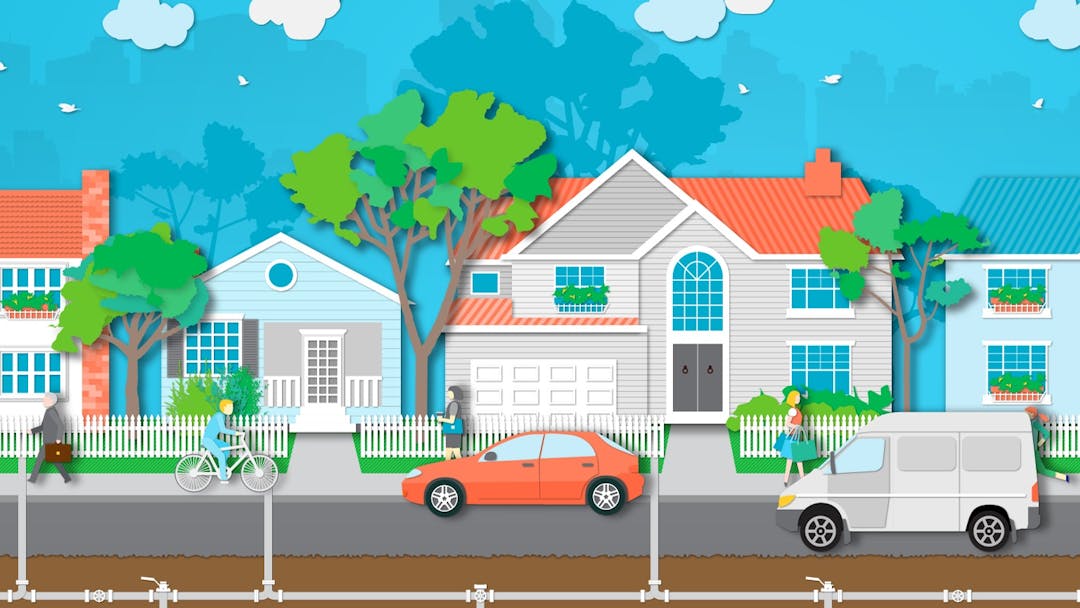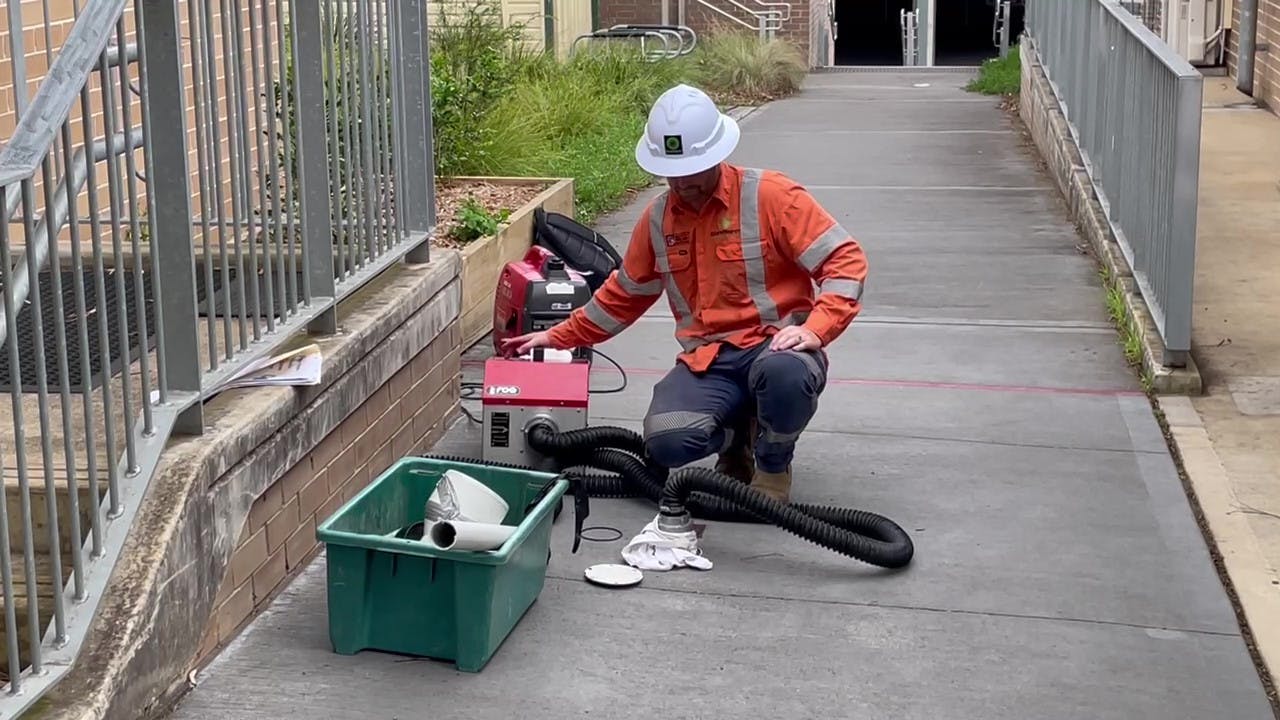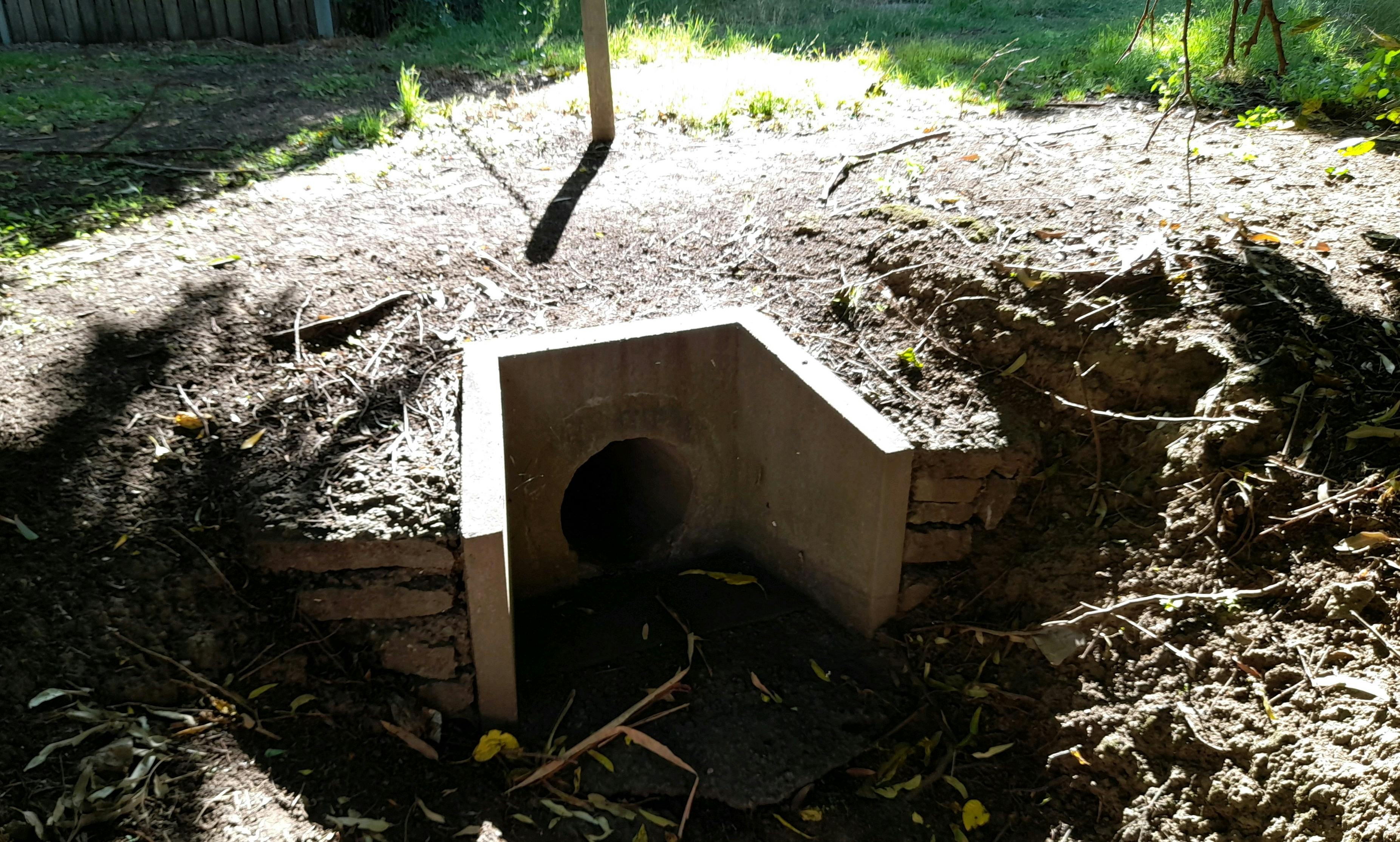Share February 2022
- What does smoke testing involve? on Facebook
Share February 2022
- What does smoke testing involve? on Linkedin
Email February 2022
- What does smoke testing involve? link
Smoke testing is used to show us where there may be damage or incorrect wastewater connections, so we can investigate and plan repairs or improvements.
Our diagram and photos show how smoke testing works and what’s involved.
A small amount of smoke is pumped into your private wastewater system from the inspection opening, or our maintenance hole on your property.
The smoke is more like a mist – it is environmentally safe and will disappear after a few minutes without any odour.
The noise from the generator that provides power to the smoke machine sounds similar to a lawn mower, and will run for short periods during the testing.
Smoke testing is an effective and helpful way to:
- show us if our wastewater maintenance hole is damaged
- check for leaks in pipes and fixtures
- locate where cracked, broken or unsealed pipes or joints are underground
- find out if stormwater downpipes are incorrectly connected to the wastewater system.
If smoke escapes from the wastewater system, it will be visible above the ground.
|
What if I see smoke during the inspection?
It’s normal to see smoke coming out of your private wastewater vent pipes, which are usually located on the roof or side of the house. This shows that the vent pipes are in good working order and your wastewater system is connected correctly.
You may see smoke coming from the outside drains or gutters on your property, and sometimes it might enter your home through the laundry, kitchen, or bathroom drains. This is why we ask you to put some water in your sinks and cover your floor drains during the inspection.
The smoke does not indicate a fire, but please let our team know if you see smoke in your home during our inspections. The smoke will clear in a few minutes with normal ventilation.
|
Share January 2022
- Private plumbing inspections have started in the
Prospect Creek catchment on Facebook
Share January 2022
- Private plumbing inspections have started in the
Prospect Creek catchment on Linkedin
Email January 2022
- Private plumbing inspections have started in the
Prospect Creek catchment link
Sydney Water has started investigations at individual residential properties in the Prospect Creek catchment. These activities help to support our work to reduce the amount of stormwater entering the wastewater system.
Our crews will be working on selected private properties between January and July 2022. The properties are located in:
We’ll write to you if we need to access to your property to complete an inspection. This will take about 30 minutes to complete and includes a visual check and smoke testing of your private wastewater and stormwater connections and pipes.
For more information, please refer to our fact sheet.
Share December 2021
- How does an Emergency Relief Structure work? on Facebook
Share December 2021
- How does an Emergency Relief Structure work? on Linkedin
Email December 2021
- How does an Emergency Relief Structure work? link
Emergency Relief Structures are used to help prevent wastewater overflows from being released through maintenance holes or private plumbing connections.
They are effective in protecting the wastewater system from damage, particularly during extreme wet weather - by stopping uncontrolled wastewater overflows to protect homes in low lying areas, and the wastewater system from being damaged.
Sydney Water’s wastewater system is designed to have additional capacity to contain extra stormwater flows entering the system during and after heavy rainfall. Though in extreme wet weather events, wastewater flows can exceed the system’s capacity. This leads to the mixed increase of wastewater and stormwater flows discharging at the designed overflow points through the Emergency Relief Structures.
The repairs and upgrades to our Emergency Relief Structures will ensure that we continue to provide a safe and reliable wastewater system to protect the environment and the health of our communities.
We have constructed new head walls and screens to improve our Emergency Relief Structures - to help them blend in with the local environment and improve how our wastewater system operates.
See photos of the work we have recently completed in Dundas, within the Mid Parramatta catchment.
Share December 2021
- Improving how Sydney Water's wastewater assets perform on Facebook
Share December 2021
- Improving how Sydney Water's wastewater assets perform on Linkedin
Email December 2021
- Improving how Sydney Water's wastewater assets perform link
Sydney Water has made great progress on its three-stage Wastewater Fix program to improve how the wastewater system performs during wet weather.
When it rains, stormwater can enter the wastewater system. In some areas, the volume of stormwater can be so high that it overloads our wastewater system, causing overflows into stormwater channels, local waterways as well as onto private properties, and inside homes.
The first two stages of work in the Mid Parramatta, Lane Cove, Upper Parramatta and
Prospect Creek catchments looks at how Sydney Water can improve the performance of its own wastewater assets.
Stages 1 and 2 of this work within these catchments is continuing in the local government areas of Liverpool, Fairfield, Parramatta, Ryde, Cumberland, Canterbury Bankstown, Strathfield, Lane Cove, Ku-ring-gai, Hornsby, Willoughby, The Hills Shire and Blacktown.
Stage 1 involves putting controls in place to stop stormwater entering our wastewater assets. This includes maintenance holes, Emergency Relief Structures and cross connections with stormwater networks owned and maintained by local Councils.
For this stage, we’re upgrading over 320 sites that are located within public reserves, roadways and private properties across the four catchment areas. The work involves:
- cleaning and removing silt that has built up in pipes and structures
- removing faulty one-way valves and replacing these with new, upgraded valves
- modifying existing structures and constructing new wastewater assets such as
Emergency Relief Structures, head walls, maintenance holes and valve chambers
- decommissioning and removing assets we no longer need.
Stage 1 work in the Mid Parramatta, Lane Cove, Upper Parramatta and Prospect Creek catchment areas started in 2020/21 and is expected to be finished in early 2022.
Stage 2 involves inspecting about 70 kilometres of wastewater pipes and over 2,600 maintenance holes, to identify and complete repairs. Our investigations involve visually checking the outside and using CCTV cameras to inspect the inside of these assets.
After our inspections are completed, the repairs may involve:
- repairing and improving wastewater maintenance holes by replacing faulty or damaged lids, installing rain stoppers and patching or resealing the structure to prevent surface water from entering
- repairing wastewater pipes using high pressure jets to clean them and remove tree roots, and then relining the pipes.
Stage 2 work across the four catchments began in 2021/22 and is planned to be completed in 2023.







